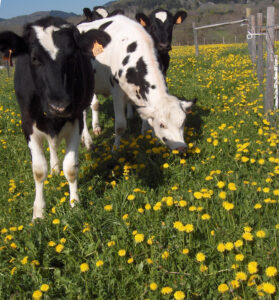
HoloRuminant has the following objectives:
Characterize ruminant-associated microbiomes
- Consolidate and derive novel knowledge from existing ruminant microbiome data.
- Pioneer and advance functional information on the eukaryotic microbiomes, viruses and yet uncultured bacteria and archaea.
- Understand the functional capacity of microbiomes by combining multi-level information for microbes, hosts and their interaction (use of (meta)genomics, (meta)transcriptomics, (meta)proteomics, and metabolomics), a concept otherwise known as “holo-omics”.
- Establish the relationships (or lack of) between microbiomes across multiple body sites of the same individual.
Define microbiome establishment and maintenance
- Define establishment of the holobiont through the transfer of microbes from the dam (vertical) and farm environment (horizontal) and within the microbiomes at different body sites of the same individual.
- Characterize microbiome roles during challenging life periods such as perinatal, weaning, and following exposure to pathogens.
Evaluate the effect of ruminant microbiomes on animal production, health and welfare
- Establish the nature of interconnection dependencies that exist between the microbiomes and critical phenotypes for sustainable ruminant production.
- Identify novel microbial markers for monitoring and predicting phenotypes of interest.
- Integrate microbial markers and host genetics into statistical models for identifying phenotypic variance.
- Identify management and feeding practices related with beneficial microbiomes associated with health and KPIs.
Facilitate the adoption by end-users of the proposed innovations
- Consider stakeholders’ needs, expectations and the levers and brakes for adoption of novel practices.
- Evaluate the potential acceptability and socio-economic impact of the innovations proposed in the project.
- Interact with influencer stakeholders for knowledge transfer.
